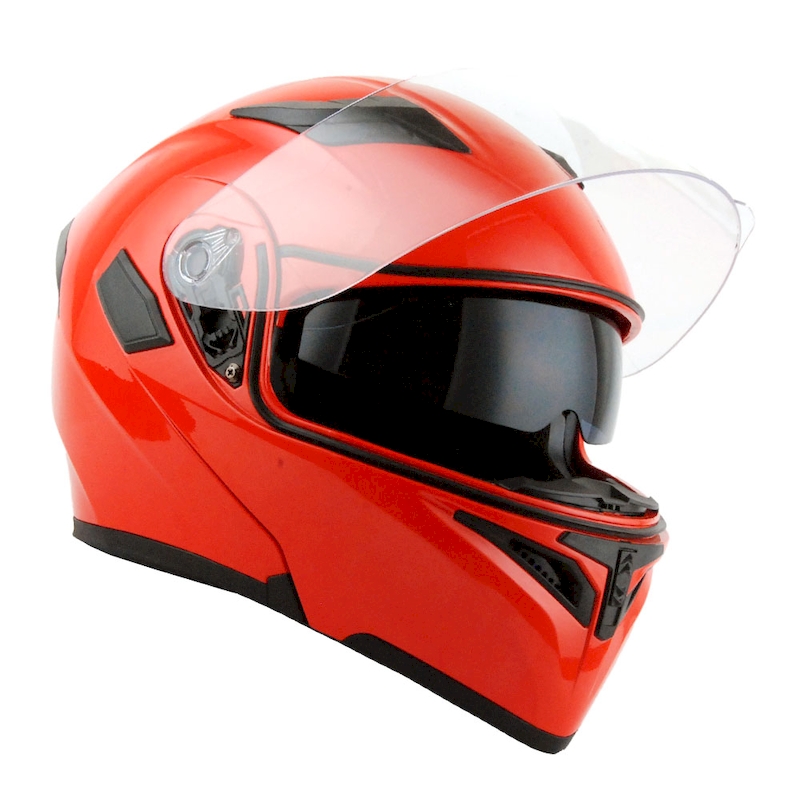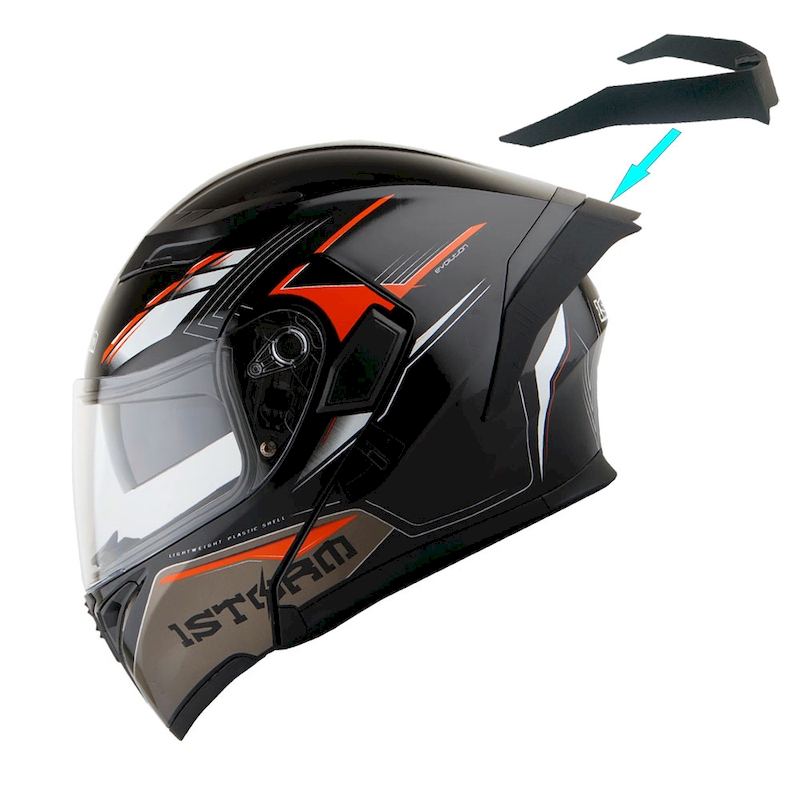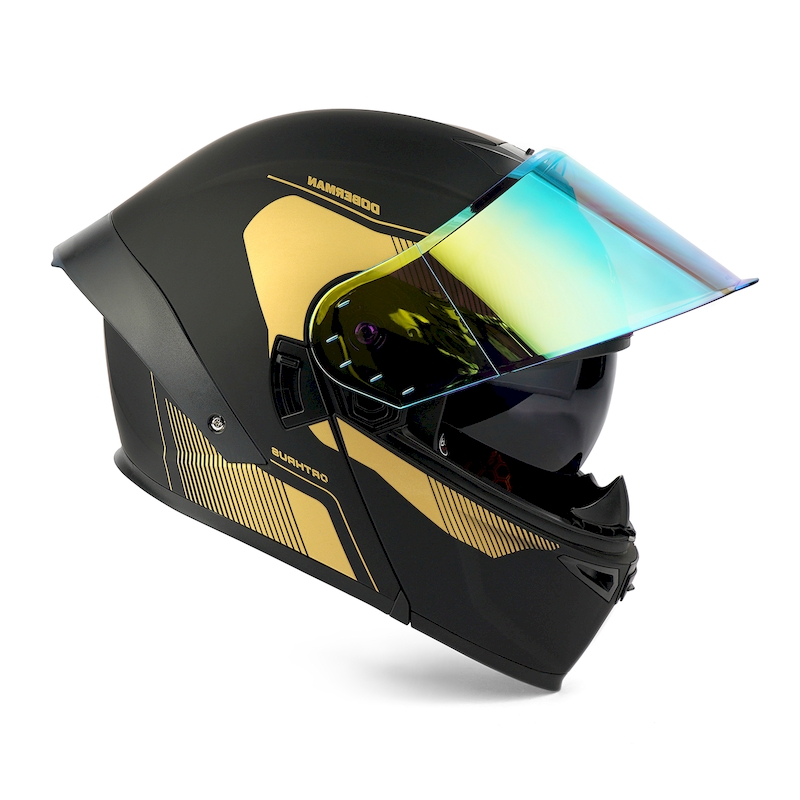Why a Properly Fitted Helmet Matters
Your helmet is the most important piece of safety gear when you’re riding. It protects your head, absorbs impact, and can save your life in the event of an accident. But if your helmet is too big, it can slide around, reducing its effectiveness. If it’s too small, it can cause discomfort, distraction, and even headaches, leading to unsafe riding conditions. That’s why finding the perfect fit is crucial.
Motorcycle helmets are designed to be snug, but they shouldn’t cause pressure points. In this article, we’ll walk you through the steps to determine your helmet size and ensure you get the right fit, every time.
Measure Your Head
The first step in finding the correct helmet size is measuring your head. How to know your motorcycle helmet size? To do this, you’ll need a flexible tape measure or a piece of string and a ruler. Follow these steps:

-
Wrap the tape measure around your head. Position it just above your eyebrows and ears, keeping the tape level all the way around. This is the largest part of your head and will give you the most accurate measurement.
-
Mark the measurement. If you’re using a piece of string, mark where the string overlaps and then measure it with a ruler.
-
Record the measurement in centimeters. Helmets are typically sized in centimeters, so it’s essential to measure accordingly. If your measurement is in inches, convert it to centimeters (1 inch = 2.54 cm).
Knowing your head size is the most critical step in finding a well-fitted helmet.
Consult the Helmet Size Chart
Once you’ve measured your head, the next step is to consult the helmet manufacturer’s size chart. Different brands can have slightly different sizing, so it’s always best to check the specific chart for the helmet you’re interested in. Here’s a general guide to common helmet sizes based on head circumference:
-
Extra Small (XS): 53-54 cm
-
Small (S): 55-56 cm
-
Medium (M): 57-58 cm
-
Large (L): 59-60 cm
-
Extra Large (XL): 61-62 cm
-
Double Extra Large (XXL): 63-64 cm
When you’re on the borderline between sizes, it’s usually best to go for the smaller size, as helmets tend to loosen slightly over time.
Try the Helmet On
Even after finding your size using the chart, trying the helmet on is essential to confirm it fits properly. How to know your motorcycle helmet size? Here’s what you should look for when trying on a helmet:

Snug Fit Without Pressure Points
A properly fitting helmet should feel snug around your entire head but not overly tight in any one area. You should feel the helmet evenly pressing against your cheeks, forehead, and back of the head without causing discomfort.
No Gaps or Loose Spots
Move your head side to side and up and down. The helmet should move with your head and not shift around. If it moves independently, it’s too large. On the other hand, if the helmet feels too tight, you might need to size up.
Check the Chin Strap
Fasten the chin strap securely. You should be able to fit no more than two fingers between the strap and your chin. If the strap is too loose, the helmet won’t stay on in the event of an impact.
Finding the Perfect Fit: Understanding Helmet Shapes
When selecting a motorcycle helmet, it’s crucial to consider not only the size but also the shape. How to know your motorcycle helmet size? Helmets are designed to accommodate different head shapes, ensuring a comfortable and secure fit. Here’s a breakdown of the most common helmet shapes:
Round Oval: This shape is characterized by a head that is approximately equal in length and width. If your head is rounder, a helmet designed for this shape will likely provide the best fit.
Intermediate Oval: This is the most common head shape, where the head is slightly longer from front to back than it is from side to side. Many helmets are designed to accommodate this shape.
Long Oval: If your head is significantly longer from front to back than it is from side to side, you have a long oval head shape. Helmets designed for this shape will provide a more comfortable and secure fit.
Why is Head Shape Important?
Choosing a helmet that matches your head shape is crucial for several reasons:
- Comfort: A properly fitting helmet will be comfortable to wear for extended periods, reducing fatigue and distractions.
- Safety: A helmet that doesn’t fit properly can shift during a crash, potentially increasing the risk of injury.
- Performance: A well-fitting helmet can enhance your riding experience by providing a secure and comfortable fit.
How to Determine Your Head Shape:

- Visual inspection: While not always accurate, visually assessing your head shape can give you a general idea.
- Try on helmets: The best way to determine your head shape is to try on different helmets. Pay attention to how the helmet feels on your head. If it feels comfortable and secure, it’s likely a good fit.
By understanding your head shape and choosing a helmet that matches it, you can ensure optimal comfort, safety, and performance while riding your motorcycle.
Wear the Helmet for 15-30 Minutes
Once you’ve found a helmet that fits well, wear it for 15 to 30 minutes to see if any pressure points develop. Pay attention to how the helmet feels around your forehead and ears. If you feel any tightness or discomfort, the helmet might not be the right fit.
Common Pressure Points
If you experience pressure around your forehead, the helmet is likely too round for your head shape. If there’s discomfort on the sides, the helmet might be too narrow. Identifying these pressure points early can save you from discomfort later on during long rides.
Consider Helmet Features and Adjustments
Modern helmets come with various features that can affect the fit and comfort. Some features to consider include:
Removable Padding
Some helmets come with removable and washable padding. This feature not only keeps your helmet fresh but also allows you to adjust the fit. For instance, thicker pads can make the helmet fit tighter, while thinner pads can provide more room.
Adjustable Ventilation
Helmets with adjustable ventilation systems can help regulate temperature and keep you comfortable on long rides. Be sure to check if the vents are easy to open and close while wearing gloves.

Visor Adjustments
The visor should provide a clear line of sight and adjust easily to different positions. Make sure you can raise or lower it without too much effort.
Confirming DOT and Other Safety Certifications
When choosing a helmet, always ensure it meets the Department of Transportation (DOT) safety standards. This certification means the helmet has passed rigorous tests and is suitable for road use. Some helmets may also have additional safety certifications such as:
-
Snell: A certification for helmets used in professional racing.
-
ECE: A European certification that tests helmets for both safety and comfort.
These certifications guarantee that the helmet can protect you in the event of an accident.
Buying the Right Helmet for Your Riding Style
Not all helmets are created equal, and the style of riding you do should influence your helmet choice. Here are some common helmet types and their best uses:
Full-Face Helmet
A full-face helmet offers the most protection, covering your entire head and face. This type is ideal for high-speed highway riding, where wind and debris can be an issue.
Open-Face Helmet
Open-face helmets provide less coverage and are typically lighter, making them a good choice for cruisers or scooters. However, they offer less protection for your face and chin.
Modular Helmet
Modular helmets are a hybrid between full-face and open-face helmets, with a chin bar that flips up. They’re great for riders who want the protection of a full-face helmet but the convenience of an open-face for quick stops.
Regularly Check the Fit and Condition
Once you’ve found your perfect helmet, it’s important to check its condition regularly. Helmets can loosen over time, and the padding can wear down, affecting the fit. Additionally, you should replace your helmet every five years or after any significant impact, even if there are no visible signs of damage.

How to Know When to Replace Your Helmet
-
Interior padding has worn down significantly.
-
The helmet has been involved in a crash.
-
You notice cracks, dents, or other damage to the outer shell.
-
The helmet no longer fits snugly.
Protect Yourself With the Right Helmet
Knowing how to determine your motorcycle helmet size is crucial for both safety and comfort. By following these steps—measuring your head, consulting size charts, trying on different helmets, and ensuring the right fit—you can ride with confidence knowing your helmet will protect you in case of an accident. Don’t forget to consider helmet features, riding style, and certifications before making your final decision.



